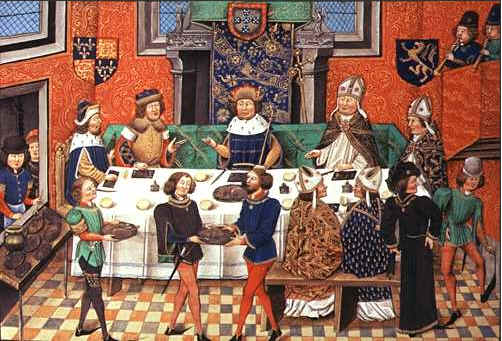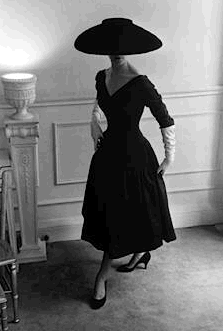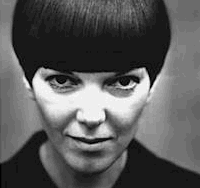She always dresses according to the latest fashion:
(style, custom, mode, trend, general practice, taste)
She moves in a graceful fashion:
(way, manner, mode of action, behaviour)
She fashioned a necklace from paper clips:
(shape, create, make, form, design, frame, mould, compose)
Medieval Fashion
The mid-14th century is generally seen as the era when fashion began. With the rise of a middle class in many European cities, dress which was based on rigid social hierarchies were gradually by a more flexible and rapidly changing system of fashion. Before this time, the basic garments for both men and women were simple. The earlier garments differed mainly in length.
Just like in male dress, the long surcoat was replaced with a short narrow jacket called a doublet, and legs were covered with tight-fitting stockings. Clothing became more decorative, with the use of contrasting colours. Shoes were exaggeratedly pointed.
The new dress for women was more fitted than before, with the main gown having a tight bodice. In earlier times, the veils that are being used by married women (swathed around the head), were replaced by headdresses that became increasingly elaborate until the end of the 15th century.
While these were not very effectively enforced, they indicate the power fashion was considered to have.
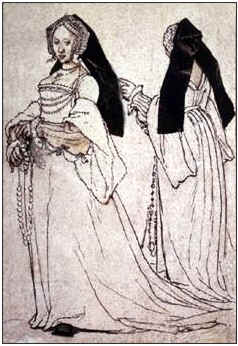
Elizabethan Fashion
The fashionable dress for both men and women in the Elizabethan period was marked particularly by rich symbolism. During the reign of Henry VIII a more sombre fashion was established in the late 1550s, with dark-coloured doublet, hose, and cloak set off by white ruffles at the neck and wrist. The neck was encircled by a ruff. Court dress in England was often designed to reflect allegiance to the queen through the use of certain colours and symbolic devices signifying her virtues, particularly her virginity.
But the women’s dress was usually the kirtle, a united bodice and skirt, covered by a formal gown. The surfaces of gown, bodice, and skirt were variegated with applied decoration and jewellery and slashes exposing material of a different colour.
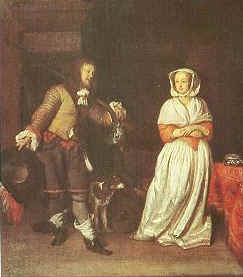
17th Century
In this period a simplification of both male and female dress occurred. During the Charles II there was a rapid changes in fashion. The three-piece suit of tunic (coat), vest (waistcoat), and longer breeches in matching fabrics came into vogue. Wigs became popular from the 1660s onwards.
Women’s dress was tight and formal until the 1680s, when the bodice, skirt, and petticoat were replaced by the gown or mantua. This was a one-piece gown which evolved from the informal “night-gown” and gave a looser, less rigid appearance
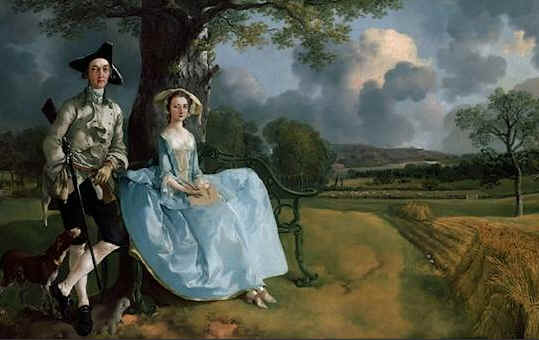
18th Century
During this period there was no essential change in the basic model of coat, waistcoat, and breeches for male clothing.
Along with the abandonment of plain, high-quality woolen clothes worn for informal, country, or sporting dress, wigs were rejected and hair was worn simply styled. English male costume set the trend with dark; cloth suits for urban wear and a country costume of a simple frock coat, beige waistcoat and breeches, and boots.
But for the English women the fashionable dress was marked by the influence of France. One of its most notable aspects was skirt that was distended sideways by panniers, sometimes as much as 5 m (15 ft). In the 1780s, the simple “chemise” dress emerged, high-waisted and light in colour and fabric, the most popular forms were made in white muslin. Following the French Revolution the chemise became more popular in France; fashion historians suggest the style represented a move away from the decadence of the Ancien Régime to republican ideals of simplicity and democracy.
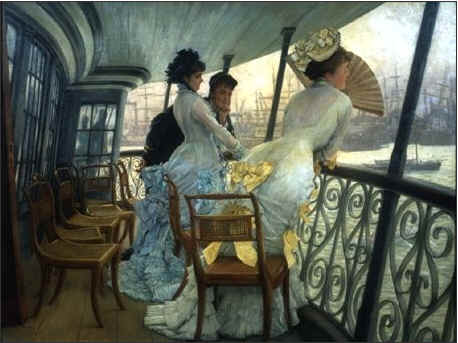
19th century
During this 19th century
Victorian Fashion was started. The male dress was more sober and restrained.
From the mid-1820s, typical daywear comprised trousers, waistcoat, and coat:
from the 1850s, these were generally made of dark wool. While men’s
appearance changed less markedly than women’s, a variety of cuts and styles
were available to male consumers.
But women's fashions of the first half of the 19th
century were suggestive of modesty and reticence. This is due to the
“downward effect” most marked in the late 1830s—ideally sloping shoulders; a
face framed by the coal-scuttle shaped poke bonnet; and long bodices worn
over an increasingly wide skirt, achieved by the deployment of multiple petticoats.
From the late 1870s, the bodice and skirt of dresses were heavily boned to
produce an hour-glass shape. While this “princess line”, as it was called,
did not rely on support under the skirt, the bustle reappeared in the 1880s
in exaggerated form, with skirts protruding up to 60 cm (2 ft) behind the
wearer.
Another notable aspect of Victorian fashion was the various “dress reform” movement, now chiefly associated with American feminist Amelia Bloomer, members of the Arts and Crafts movement, and the Rational Dress Society. In general, the dress reformers advocated the wearing of looser and more comfortable clothing for women than was the norm.
20th Century
In the fashion world, the Edwardian period (1901-1910)
were characterized by flowing dresses in pastel shades made of light fabrics
with extensive lace trimmings. The Parisian designer Paul Poiret is said to
have evolutionized fashionable clothes for women with his “Directoire” line
of 1908 which was partly influenced by the sheath-like shapes of a century earlier.
After some years he introduced divided skirts or harem trousers. The overall
effect was looseness in marked contrast to Victorian rigidity.
But the actual era of greater
freedom for women are recognized in the year 1920.In general, this comprised
shortened skirts and hairstyles, rounded collars, and boyish silhouettes.
Ideas about modernity were reflected in the geometrical patterns used by textile
designers, and the emphasis on youthful sportiness.
A wider accessibility of fashionable dress through mass
circulation of women’s magazines and the expansion of retail chain stores occurred.
One of the most significant influences on fashion was Hollywood, with
sophisticated marketing and selling strategies ensuring the availability of
styles made popular by leading film stars.
During the time of World War
II, severe rationing was introduced in Britain. In German-occupied Paris,
however, fashions were comparatively extravagant. For couturier Christian
Dior to introduce the “New Look” (i.e. ample skirts, cinched waists, padded
hips, and boned corsets.)
Most aspects of the New Look were adopted by the
1950s.Towards the end of the 1950s, casual clothes influenced by American and
continental fashions became popular with young people (i.e. Black polo necks,
flat-heeled shoes, and narrow trousers.)
Fashions of the 1960s were
predominantly youth-oriented. The miniskirt, associated with London-based
designer Mary Quant, had a major impact on skirt hemlines in general. Male
fashion became more expressive, with the use of brighter colours and more
varied forms.
With the demise of haute couture clothing, fashion designers have expanded into cheaper ready-to-wear lines and accessories bearing their name such as perfume, aftershave, and make-up. Retail chains have appeared in greater numbers since the 1980s, as have “shops within shops”, franchised areas of department stores dedicated to selling clothes by named designers. In addition, more investment in fashion forecasting and marketing has seen the rise of new professions within the fashion industry.
